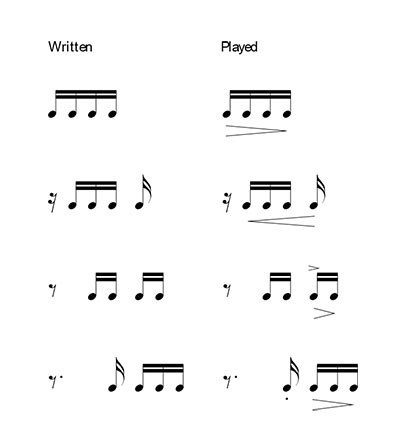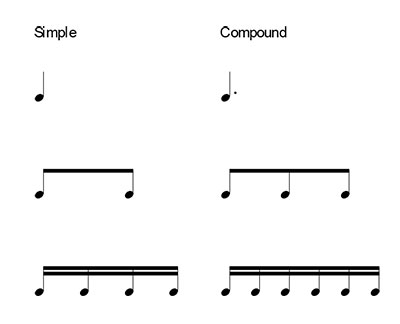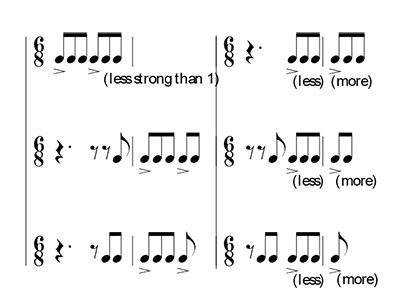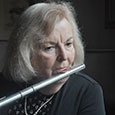A common exercise in drama classes is to take a three-word sentence and practice delivering it three different ways with inflection on each of the words. For example: “I” love you, I “love” you, and I love “you?”
Marcel Moyse (1889-1984), the legendary French flute and woodwind pedagogue who taught at the Marlboro Music Festival in Brattleboro, Vermont in his later years, used this three-word sentence to illustrate the musical inflection called a Mannheim Sigh. While the Mannheim sigh is found in compositions ranging from the Renaissance to contemporary times, Moyse specifically taught it while coaching musicians on its usage in the works of Mozart (Concertos, Divertimentos, Gran Partita etc.). The inflection of the sentence that Moyse wanted was I “love” you.

The rules of inflection are directly related to the strength of the beat concept. In 4/4 the first beat is the strongest, then the 3 beat, followed by lesser beats 2 and 4. Teachers often put words to rhythmic figures to help students play the inflection. For example, try “Here comes the bride and (bar line) gr-oom in the opening of the Mozart, Concerto in G for flute and orchestra, K. 313, first movement:

Using verbal props helps students remember to play with inflection. Recently in a lesson a student encountered the following rhythm:

All of the notes of the rhythm are the same pitch. When the student played the passage, there was no inflection, so it was impossible to determine where the down beat was.
After reviewing the strength of the beat concept, I wrote out the following four rhythms and asked the student where the inflection should be and why.

The deeper meaning here is a player should acknowledge where the strong beats are. In early music (Baroque and Classic), the inflection of the notes becomes softer after playing beat 1 because this music is based on the idea of dancing. Music of the 1800s is based on the idea of singing, so the notes lead to 1 as in Marcel Tabuteau and William Kincaid’s idea about note-grouping 1, 2341, 2341 etc.
In an ensemble setting, it is good to practice rhythms in compositions on one pitch to be sure that students understand the function of the note within the rhythmic scheme.
I had written the previous example on a post-it note for a student on a Zoom lesson. My husband, a conductor, noticed it and said, “You should do this for compound meter because few high school and college students really understand the inflection of compound meter.”
To review, in simple meter the background pulse is divisible by 2s. In compound meter, the background pulse is divisible by 3s. An easy comparison to make is that our bodies are in two. We walk left/right, we blink our eyes open/close, etc. However, compound meter is reminiscent of being on a boat with waves lifting the boat down/up/up. Jacque Offenbach (1819-1880) illustrated this so well in his composition Barcarolle from the opera The Tales of Hoffmann.

Here is a similar example of the inflection exercise in compound meter with an accent placed on the beat that should be slightly inflected.

In a rehearsal, a good plan is to present the problem. Discuss the solution. Practice the solution until all understand and can apply what has been learned to the repertoire being studied. I worked with an excellent band director when I was teaching at Brigham Young University-Idaho. He told the students to play rhythms and articulation patterns so clearly that someone in the audience could take down what is being played in dictation.
During my undergraduate studies, I was privileged to perform with Frederick Fennell conducting the Eastman Philharmonia. Much later I realized that the success of any ensemble Fennell conducted was the result of his passion for playing exactly what was on the page with clarity, inflection, and dynamics.
In one of the first rehearsals with Fennell, I was sitting in the front of the ensemble and noticed there was a huge sign behind the conductor’s podium that said, “Listen.” During the rehearsal I noticed there were similar signs on the walls to my right and to my left. As I was leaving the rehearsal, I noticed there was yet another sign that said the same thing. The interesting thing is the only person in the rehearsal who could see that sign was Fennell. If he reminded himself to listen, we too should challenge ourselves to be better listeners and of course, play what is on the page with inflection.






